This conference was dedicated to showcasing innovations and the latest achievements in radar systems and technology from research to radar construction.
In addition to the Plenary Session, there were 18 exciting sessions with over 180 papers and posters covering a range of topics including system engineering, radar hardware, antennas, signal and data processing, radar modeling, devices, waveform design, SAR, OTH, and other radar topics.
The key fields of interest are the following:
• High power tubes
• Transmit/Receive Modules
• Software/Digital Receivers
• Phase-Array technology
• Radar Propagation and Performance Prediction
• Passive Radar
• Radar modernization and some other aspects
1. Purpose
The purpose of this visit was to collect up to date information and maintenance knowledge for present and future radar technologies, ensuring our, radar engineering, technical expertise and support of the short, medium and long-range radars will be more effective for both new updates/developments and interaction with radar contractors and manufacturers.
2. Findings
The Radar Week began and ended with tutorials as follows:
- Tutorial T1: Bistatic and Multistatic Radar
Speaker: Prof. Hugh Griffiths, Cranfield University, UK
- Tutorial T2: Embedded Digital Processing for Radar Applications
Speakers: David Martinez, Robert Bond and Dr. Michael Vai, MIT Lincoln Lab
- Tutorial T3: Phased-Array and Radars - Breakthroughs and Trends
Speaker: Dr. Eli Brookner, Raytheon
- Tutorial T4: Advanced Applications of Synthetic Aperture Radar
Speaker: Dr. Les Novak, Consultant
- Tutorial T5: Space-Time Adaptive Processing for AMTI and GMTI Radar
Speakers: Dr. Stephen Kogon and Dr. Daniel Rabideau, MIT Lincoln Lab
- Tutorial T6: Radar Propagation and Performance Prediction
Speakers: Dr. Eli Brookner, Raytheon, Dan Dockery, JHU Applied Physics Laboratory and Wayne Patterson, US Navy, Space and Naval Warfare Systems Center
- Tutorial T7: Microwave and RF Signal Generation for Radars
Speaker: Dr. Zvi Galani, ZG Consulting
- Tutorial T8: IBM Cell Broadband Engine Signal Processor
Speakers: David Erb, IBM and William Lundgren, Gadae
Short summary on the papers, might have an interest, as follows:
1. High power tubes:
Barus Levush, Noval Research Laboratory, USA : Vacuum Electronics: Status and Trends.
Enhancements to performance, reliability, and cost of ownership are being applied continuously to these systems; routine in-service life extensions mandate continuing vacuum electronics research and development to support system needs for the foreseeable future. In addition, exciting advances in vacuum electronics will provide dramatic improvements in millimeter-wave radar resolution, broadband low-noise power at microwave frequencies, compact high power sources operating at lower voltages, and life-cycle cost improvement. Recent progress in key enabling technologies, e.g., advanced device modeling and micro-fabrication, is expected to continue. The paper reviews the status and trends of vacuum electronics, The figure of merit, Pf 2, captures the ability of a device to generate RF power, where P is the average power in megawatts and f is the operating frequency in GHz. The steady progress in Pf 2 achieved for various VE device types shows a doubling of Pf 2 every two years. (Figures. 1 and 2)
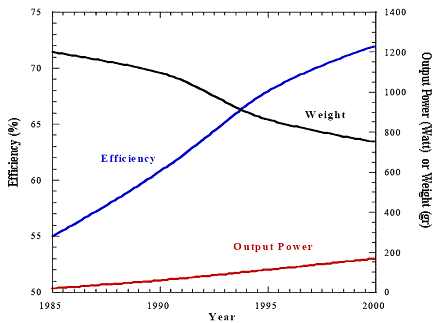
Figure 1. Space TWT: Efficiency, Power and Weight
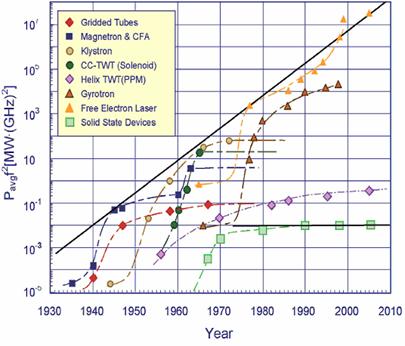
Figure 2. Improvement of the Figure of Merit (Pf 2 )
Summary and impression:
The high power tubes will remain in service until 2030 at least. The efficiency, maintainability and reliability are increasing and nowadays these parameters are very good and cost effective.
2. Transmit/Receive Modules:
Mark E. Russell: Future of RF Technology and Radars, Raytheon Integrated Defence System, USA
This paper discusses future trends, enabling technologies and related cost issues facing radar systems engineers. (Fig.3) Figure 4 shows how a cost optimum can be reached by trading module power with antenna area.
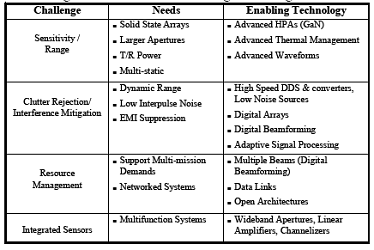
Figure 3. Primery technical challenging
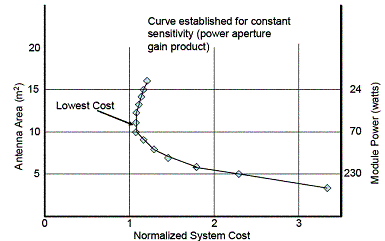
Figure 4. Cost optimalization of Phase array required power moduls
Mark J. Rosker: Technologies for Next Generation T/R Modules, DARPA, USA
Technologies to enable the next generation of transmit/receive modules for sensor and communications systems are being pursued in programs funded by the Defense Advanced Research Projects Agency (DARPA). DARPA programs contributing to dramatically improved performance and wafer-scale integration for T/R modules. These programs include the Wide Band Gap Semiconductors for RF Applications program, the Scalable Millimeter Wave Architectures for Reconfigurable Transceivers program, the Integrated Sensor in Structure Critical Technology Demonstration, and the Sub-millimeter Wave Imaging Focal-plane Technology program.
Bruce A.Kopp: S - and X-Band Radar Transmit/Receive Module Overview, USA, The references with datasheet are available through internet which are also important.
This paper discusses pertinent issues and trends for S-band and X-band transmit/receive (T/R) modules. The performance of gallium arsenide (GaAs) T/R module components and wide band-gap power amplifiers is presented along with future challenges. T/R module cost is addressed also with an emphasis on semiconductor cost factors and issues. Finally, a discussion of packaging and assembly technologies is provided.
S.A. Pappert and B. Krantz: RF Photonics for Radar Front-Ends, USA
Recent developments in RF photonic component technologies can have a significant impact on future radar system architectures. In this paper, current performance of low noise figure and high dynamic range RF distribution links and delay lines, low phase noise RF oscillators, and fast tunable RF filters developed using photonic technologies are highlighted. Performance comparisons with electronic RF front-end technologies are provided including size, weight and power considerations. Finally, other RF photonic technologies applicable to radar systems and further photonic device improvements required for more pervasive radar system use are discussed.
Summary and impression:
The functionality and adaptivity is increasing on the transmit site of the radar as well. It is possible to build an active phase array with automatic phase and amplitude adjustment for the compensation of the failed Tx modules effect. These techniques reduce the Tx and Rx loss in case of failures. The opto devices are becoming more and more popular in the radar first of all for synchronization purposes.
3. Software/Digital Receivers:
Keir C. Lauritzen, Joseph E. Sluz etc: High-Dynamic-Range Receivers for Digital Beam Forming Radar Systems, The Johns Hopkins University Applied Physics Laboratory, USA
A microwave S-Band receiver was developed for studying dynamic range issues in digital beam forming (DBF), phased-array radar systems with multiple receivers. Particular attention was paid to understanding the balance between the analog and the analog-digital conversion segments of the receiver to maximize its dynamic range. Measurements of spurious signals were made well below the receiver noise floor to gain an understanding of which spurs, if correlated among the receivers in a DBF system, might appear above the noise level at the output of the digital beam former. (Figures 5. and 6.)
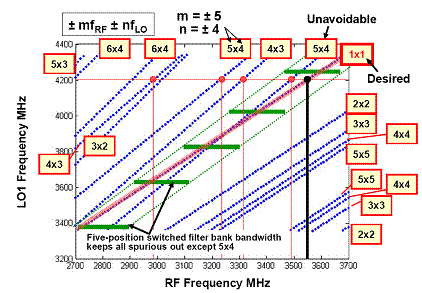
Figure 5. Mixing products at the output of the first mixer generated by receiver input frequencies resulting in the same IF1 = 650 MHz. Identified in the figure are the desired 1x1 mixing product and the pass-bands for the switched filter bank channels.
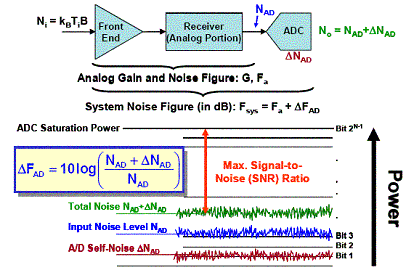
Figure 6. Schematic diagram showing how the input noise to the ADC and the noise generated in the ADC contribute to the receiver system's output noise, the total system noise figure and the SNR.
C.T. Capraro: Knowledge Aided Detection and Tracking, Air Force Research Laboratory Sensors Directorate, USA
Proper use of knowledge of the environment can assist in the detection and tracking of targets within a radar system. (Figure 7.)
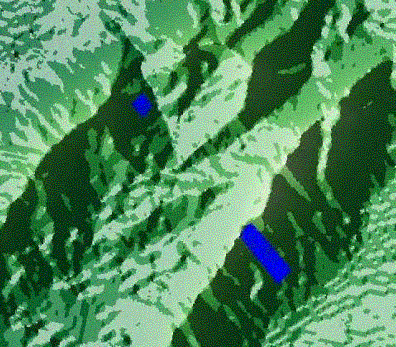
Figure. 7. Shadow region example using the KA elevation algorithm. Shadowed cells (blue) in a mountainous terrain are highlighted. The radar is located North-West of this area with its main beam pointing South-East.
Onur Haliloglu, A. Ozgur Yilmaz: Successive Target Cancelation in Pulse Compression Radars, METU, Turkey,
Many radars suffer from masking of weaker targets by stronger ones due to range sidelobes of pulse compression codes. Authors propose a method to prevent this by successively detecting targets and canceling their effects.
Ulku Cilek DOYURAN, Yalcin TANIK: Detection in Range- Heterogeneous Weibull Clutter, Aselsan Inc., Middle East Technical University, Ankara, Turkey
It is known that usual CFAR methods suffer from target masking or increased false alarm rate when operated in non-Rayleigh or range-heterogeneous clutter. The proposed algorithm is shown to perform well in homogeneous or heterogeneous Weibull clutter environment and yield better performance than commonly known methods.
M.M. Jamali, A. Affo, N. Wilkins, P. D. Mumford and K. Hahn: DSP Based Implementation of Direction of Arrival for Wideband Sources, Department of Electrical Engineering & Computer Science, The University of Toledo, Toledo, Spain.
There is a need for the computation of Direction of Arrival (DOA) for wideband sources for number of applications. It was investigated possibility of implementing it using commercially available Digital Signal Processor (DSP) in an effort to achieve real time capability.
Stephen Welstead: Characterization of Range Resolution as a Function of Bandwidth and Frequency, Radiance Technologies Inc., USA
This paper shows that, for fixed bandwidth, the quality of peak separation in the processed return of two closely spaced scatterers is a nonlinear, non-monotonic function of frequency and range separation.
Dimitris A. Pados, George N. Karystinos etc.: Short-data-record Adaptive Detection, Universities in Greece-USA
The classical problem of detecting a complex signal of unknown amplitude in colored Gaussian noise is revisited in the context of adaptive detection with limited training data via the auxiliary-vector (AV) filter estimation algorithm. Based on statistical conditional optimization criteria, the iterative AV algorithm starts from the target vector and adding non-orthogonal auxiliary vector components generates an infinite sequence of tests that converges to the ideal matched filter (MF) processor for any positive definite input autocorrelation matrix. Computationally, the algorithm is a simple recursive procedure that avoids explicit matrix inversion, decomposition, or diagonalization operations. When the input autocorrelation matrix is replaced by a conventional sample-average estimate, the algorithm effectively generates a sequence of MF estimators; their bias converges rapidly to zero and the covariance trace rises slowly and asymptotically to the covariance trace of the familiar adaptive matched filter (AMF). For finite data records, the generated sequence of estimators offers favorable bias/covariance balance and members of the sequence are seen to outperform in probability of detection (for any given false alarm rate) all known and tested adaptive detectors (for example AMF and the multistage Wiener filter algorithm). While the issues treated refer to general adaptive detection procedures which are given in the context of joint space-time adaptive processing for array radar.
R. P. Perry, R. C. DiPietro, R. L. Fante: Coherent Integration With Range Migration Using Keystone Formatting, The MITRE Corp. USA
Currently radar designers apply a rule of thumb that a target must remain in the same range resolution cell during the coherent integration time. Thus Doppler processing depends mainly on the change in phase from pulse to pulse. This results in limiting either the range resolution or Doppler resolution of the radar enabling very high range resolution or very high Doppler resolution but not both. Authors present an approach to radar matched filtering which does not have these limitations and can produce simultaneous high range and high Doppler resolution matched filter outputs.
A.K. Shackelford, J. de Graaf, S. Talapatra, S.D. Blunt, and K. Gerlach, Adaptive Pulse Compression: Preliminary Experimental Measurements, Radar Division Naval Research Laboratory - Department of Electrical Engineering and Computer Science University of Kansas, USA,
Preliminary experimental results from the Adaptive Pulse Compression (APC) test bed were presented. A recently proposed adaptive processing technique has been shown via simulation to improve upon current pulse compression techniques through a process known as reiterative minimum mean-square error estimation (RMMSE). The RMMSE technique forms the basis of the APC and the Multistatic APC (MAPC) algorithms. This paper introduces experimental results demonstrating the feasibility of these approaches. (Figure 8.)
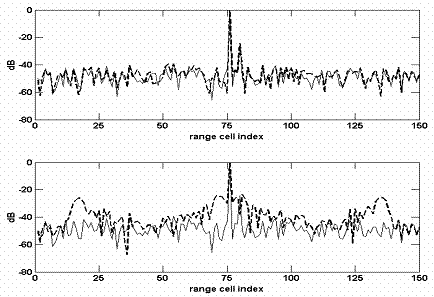
Figure 8. APC (top) and matched filter (bottom) range estimations. Ground truth is shown as a solid curve and estimate as a dashed curve.
Summary and impression:
The present and future of the radar modernization is to apply Software Receivers (SR) with powerful COTS signal processing. It is the so called " one block solution ". The main advantage is that there is almost no hardware and software maintenances cost.
It seems to me that the well known Marcum and Swerling target detection models are obsolete and there are new target statistical cases that have emerged which are more realistic, flexible and have no computer limitations.
New more efficient methods of target detection (e.g. Adaptive pulse compression etc), clutter and multipath rejection and jammer cancellation are included in the SR. The efficiency of SLB or SLC (Side Lobe Cancellation) are increased due to new digital signal processing and simulation technology.
4. Phase-Array technology:
Dr. Eli Brookner, Life Fellow IEEE: Phased-Array and Radar Breakthroughs, USA
Phased array radars and radars have seen in recent years breakthroughs that lead to capabilities not possible only a few years ago. This is exemplified by the development of GaAs integrated microwave circuits called monolithic microwave integrated circuits (MMIC) which makes it possible to build active electronically scanned arrays (AESAs) having lighter weight, smaller volume, higher reliability and lower cost. MMIC allows the construction of AESAs for applications not feasible before. This integration has reached the point where it is possible to now build a low cost 35 GHz phased array for a missile seeker costing $40/element (total cost of array including all electronics divided by number of elements). The advances provided by Moore 's Law have now ensured that it is feasible to carry out digital beam forming with all its numerous advantages. One advantage of digital beam-forming is the ability to lower the search power and occupancy by up to a factor of two. Another advantage is that it makes it possible to achieve the performance of a fully adaptive array without having to do a large matrix inversion, i.e., it makes adaptive- array processing or equivalently principal decomposition feasible. (Figure 9 to 14.)

Figure 9. Phase Array jammer cancellation technics
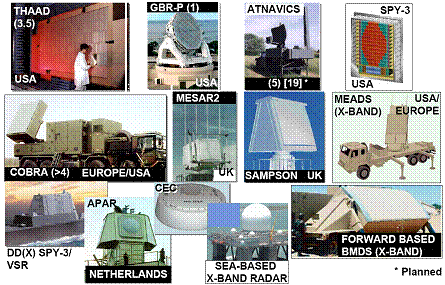
Figure 10. Ground/Sea Active Arrays Using Integrated Circuit Solid-State Transmitters
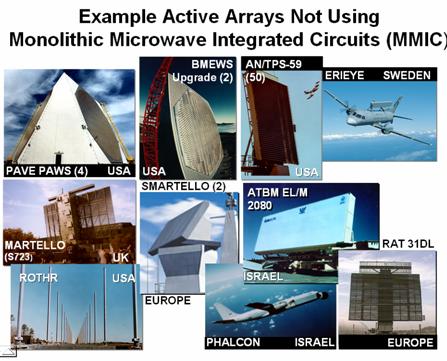
Figure 11. Ground/Air Active Arrays
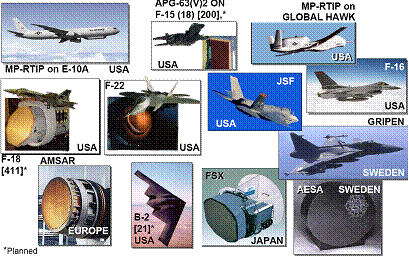
Figure 12. Example Airborne MMIC Active Arrays Deployed and Under Development
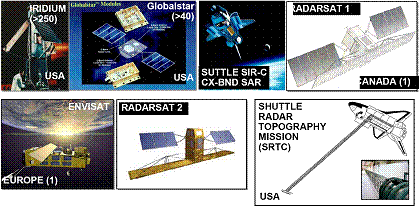
Figure 13. Space-Based-Radar Systems; All Phased Arrays, Most Solid-State
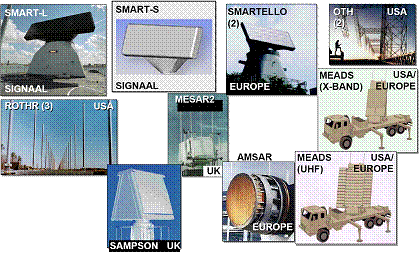
Figure 14. Phased Arrays That Use Digital Beam Forming
Also covered was: the potential for GaN and SiC chips which have the capability of a factor of ten higher peak power than GaAs chips; arrays with instantaneous bandwidths of up to 33:1; SiGe low cost T/R modules; low cost MEMS arrays; metamaterials which provide negative refractivity possibly allowing focusing beyond the diffraction limit; a real radar application for Multiple-Input Multiple-Output (MIMO) (Figure 15 and 16.) as opposed to fantasy has been demonstrated by Lincoln Laboratory MIT which allows the coherent combining of two radars to achieve a 9 dB increase in sensitivity; the ability to build microwave tubes that are smaller, more power efficient, lighter, require lower voltages and have lower cost.

Figure 15. Next Generation Radar Using MIMO and Orthogonal Waveforms
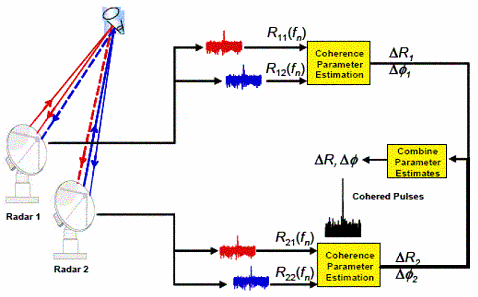
Figure 16. Basic coherence architecture showing monostatic and bistatic returns separated by matched filtering (COUTTS & COUMO, IEEE SAM 2006, BOSTON )
J. Clayton Kerce, George C. Brown, and Mark A. Mitchell: Phase-Only Transmit Beam Broadening for Improved Radar Search Performance Georgia Tech Research Institute, USA
The operational value of applying transmit beam broadening in radar search is considered. Test cases are established to evaluate search radar performance with beam broadening and without beam broadening, and also for different beam broadening arrangements. The test cases are evaluated according to search occupancy and probability of detection performance. The advantage of beam broadening for a horizon search fence is demonstrated; this approach extends to generic search fence design, and is particularly advantageous for broadening factors of 3: 1 or higher.
Summary and impression:
The radar should be intelligent in the means that the change of environment can be calculated and adapted to a radar in advance. New techniques such as Multiple-Input Multiple-Output technology, which allows the coherent combining of two radars to achieve a 9 dB increase in sensitivity or the operational value of applying, transmit beam broadening in radar search to increase probability of detection performance.
5. Radar Propagation and Performance Prediction:
G. Daniel Dockery, Ra'id S. Awadallah, David E. Freund, Jonathan Z. Gehman, Michael H. Newkirk: An Overview of Recent Advances for the TEMPER Radar Propagation Model, The Johns Hopkins University Applied Physics Laboratory, USA
This survey of recent improvements and development efforts associated with the Tropospheric Electromagnetic Parabolic Equation Routine (TEMPER). These improvements include hybridized, multiple-method approaches to terrain and grazing angle modeling, and a more robust impedance boundary. Ongoing development efforts include improving the representation of ocean waves as small-scale roughness, range bias estimation based on phase, two- versus three-dimensional model comparisons, and time-dependent pulse modeling.
Dr. Eli Brookner, Dr. Pierre-Richard Cornely: AREPS and TEMPER - Getting Familiar with these Powerful Propagation Software Tools, IEEE, The Raytheon Company, USA
AREPS and TEMPER are two powerful software tools developed by the US government that allow the determination of radar coverage for real world propagation conditions. TEMPER was developed by the Applied Physics Laboratory (APL) and AREPS by the Space and Naval Warfare System command (SPAWAR) with mutual cooperation between the two. Both tools allow determination of coverage in ducted conditions and in the presence of sub-refraction and super-refraction. Both tools account for multi-path and take into account actual terrain height variations with range. When performing propagation over water both tools take into account surface roughness. This paper gives a discussion of each of these tools with the intention of providing the user with a better understanding of them and of how to use them. TEMPER does not come with an application program to calculate Pd. It provides the propagation factor and then the user needs a separate radar equation program to generate the Pd coverage. In calculating the propagation factor, AREPS allows the user to take into account local terrain height variations by using topographic data. Digital topographic data, known as Digital Terrain Elevation Data (DTED) is available on the web free of charge for anywhere around the world. The user specifies the location of the radar and the desired area to cover and the web site automatically down loads the required DTED data to the proper AREPS file with minimal effort. For DTED 0 (900 m resolution) use:
http://geoengine.nga.mil/geospatial/SW_TOOLS/NIMAM USE/webinter/rast_roam.html
There is also the more accurate DTED 1 (90 m resolution) available at: http://srtm.usgs.gov/data/obtainingdata.html.
TEMPER provides the user with some very effective tools for extracting DTED data. The set of tools does not usually come with the general TEMPER package but can be made available to interested parties upon request. The AREPS model has some additional features such as: wide availability around the world and comprehensive technical support. To download AREPS from the SPARWAR website, the user needs only register on the SPARWAR website; http://sunspot.spawar.navy.mil/.
TEMPER is limited to use by U.S. Citizens on U.S. DoD programs, and is subject to U.S. Navy approval.
Caglar Yardim, Peter Gerstoft, William S. Hodgkiss, and Ted Rogers, Statistical Estimation of Refractivity from Radar Sea Clutter, University of California, San Diego and Space and Naval Warfare Systems Center
The main objective is to predict and improve maritime radar performance by statistically estimating and tracking the three dimensional real-time properties of the lower atmosphere in which the radar is operating. Refractivity from Clutter uses radar clutter to predict the refractive environment. This means that one has to predict the electromagnetic lower atmospheric ducts that frequently form in many ocean and coastal regions of the world. (Figure 17.)
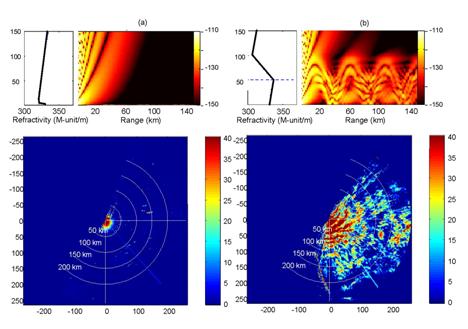
Figure 17. Propagation estimation (a.-No Ducting case; b.- Ducting case)
Summary and impression:
The new powerful software tools are allow the determination of radar coverage for real world propagation conditions. These free of charge softwares (mostly) need to be in the hands of experts who are maintaining the radar net also.
6. Passive Radar
Odile Roberta Cardinali, Fabiola Colone, Chiara Ferretti, Pierfrancesco Lombardo: Comparison of Clutter and Multipath Cancellation Techniques for Passive Radar, INFOCOM Dept. - University of Rome, Italy
Authors address the problem of clutter and multipath cancellation in passive radar. Different adaptive techniques are considered based on both well known approaches and innovative strategies. The performance comparison allows the understanding of the particular behavior of each technique in a practical scenario. The proposed innovative strategies are shown to be very appealing solutions for disturbance cancellation in passive radar. A short overview on the Passive Coherent Location radar system can be seen on Figure 18.
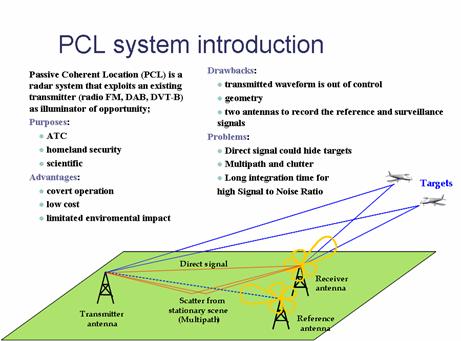
Figure 18. Passive Coherent Location radar system
Summary and impression:
The passive radar is a particular bistatic radar which an existing transmitter as illuminator of opportunity. The main advantages of the passive radar are:
• covert operation
• low procurement cost
• limitated environmental impact
The main drawbacks are:
• transmitted waveform is out of control
• target detection determined by system geometry
• required two antennas (at least) to record the reference and surveillance signals
• direct signal, from transmitter, could hide targets
• multipath and clutter maintenance
• maintainability (e.g. two site to maintain)
7. Radar modernization and some other aspects:
Odile Adrian: Future Surface Radar technology: From Air Defence to Air and Missile Defence THALES Air Systems, France
This paper describes how Air Defence radars are evolving from general Air Defence missions (single-mission radar) to Air and Missile Defence missions (multi-mission radar) in order to cope with new threats for Homeland Defence and External Theatre Defence. After a description of the radar requirements for general Air Defence and Missile Defence, Missile Defence impacts on radar sensors are explained. It is shown that conventional Air Defence radar cannot completely meet at the same time both Air Defence and Missile Defence requirements. The present multi-mission, multifunction MASTER A development by Thales is described. The final parts explain the Thales portfolio evolution from MASTER A to M3R and the related S Band product policy. (Figure 19.)
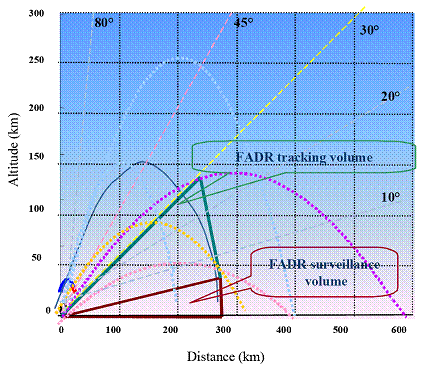
Figure 19. Ballistic missile trajectories and its detection requirements
Joseph R. Guerci: Next Generation Intelligent Radar, Arlington, USA
A confluence of several recent advances in adaptive radar technologies has created the opportunity for major advancement in "intelligent adaptive radar". Firstly, the appearance of fully digital AESA radars has provided the radar system engineer with unprecedented opportunities for rapid agility and adaptability -including pulse-to-pulse modulation agility/adaptivity. Secondly, recent advancements in the theory and design of adaptive waveform capability has matured to the point where new radar operating modes can be conceived that exploit the aforementioned fully digital transmit capability. Finally, real-time knowledge-aided processing for radar has also matured to the point where the adaptivity of the radar (both on transmit and receive) can be intelligently regulated through precise environmental awareness. In this paper, all of these elements are combined to show how a new intelligent radar architecture can be conceived that not only acts "intelligently" on the receive chain, but also on the transmit side - in some ways analogous to nature's own intelligent sonar system. (Figures 20 - 21.)
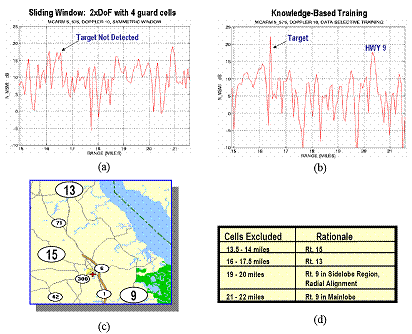
Figure 20. Illustration of the impact prior knowledge (in this case prior road network data) can have on improving detection performance for the MCARM data set. (a) STAP filter residue without knowledge-aided processing. (c) Local map of region indicating locations of road networks. (d) A training cell exclusion rule based on the map data. (b) Target, which was previously undetected, is clearly visible after intelligent training
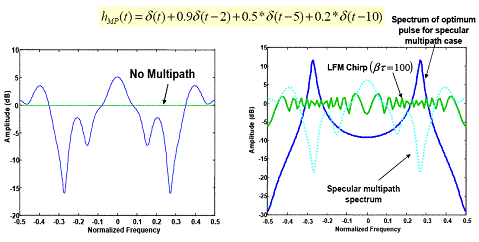
Figure 21. Example illustrating the impact of transmit waveform optimization on SINR. The presence of a multipath interference source gives rise to a colored noise spectrum. The tailored transmit waveform (and matched filter) result in over a 9 dB improvement in SINR
Arne Theil, Lucas J. van Ewijk: Radar Performance Degradation due to the Presence of Wind Turbines, TNO Defence, Netherlands
Wind turbines located in the vicinity of a radar system may affect the system's detection and tracking capability. A description of adverse effects is given in the paper for both primary and secondary radar. In order to judge the consequence of the shadowed volume cast by a wind turbine, results of radar performance analyses are presented. It is shown that radar performance may be significantly degraded when a low-RCS target deliberately seeks a shaded volume. Suggestions to alleviate the problem are given. (Figure 22)
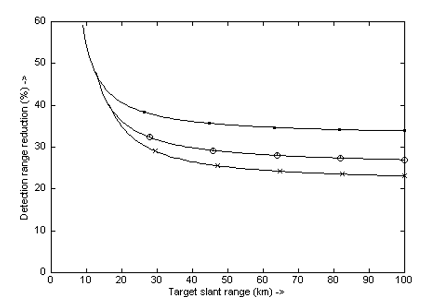
Figure 22, Detection range reduction versus target range. Dots:
windturbine at 4 km range, circles: at 6 km, crosses: at 8 km.
New type of target and new radar: RADAR IN BLIMP: RADAR GOLIATH Figure 23 - 24.

Figure 23. Aeroscraft: flying QUEEN MARY II flying cruise ship, vertical launch, 174 mph, 18 hrs across usa 8000 ft
1st ship: 2010
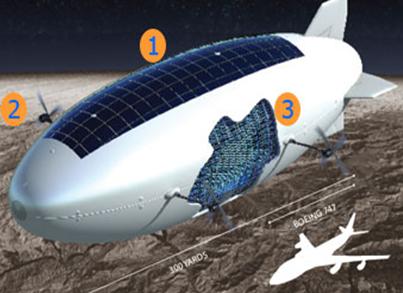
Figure 24. Radar in blimp: RADAR GOLIATH: Integrated sensor in structure,70,000 ft altitude, antenna ~ 100m long, UHF and X-band,
to 1 yr endurance 1- Solar panels; 2-Propulsion; 3-Radar Array
Summary and impression:
The change of environment clutter and/or jammer conditions are becoming more and more challenging for the current radar net. New technologies should also be implemented in the legacy radars. The subsystem upgrades offer less and less risk due to advanced simulation tools they are also relatively cheap.
The new dual band (UHF and X) radar on the balloon platform is currently in the planning and prototype phase.
3. Conclusion
The new information which has been introduced here can be used to improve engineering technical skills and it gives general impression on the advance radar technology for the experts interested in the field where this type of radars are applied or will be applied.
It makes sense for smaller countries like Hungary to start or continue small scale simulation studies on target detection or jammer cancellation to find out efficiency, cost and risk in its implementation in legacy short, medium and long-range radars. It is also important to draw the reader's attention on that Hungary and its neighboring countries have a unique knowledge have been collected by operating VHF, L and S band surveillance radars. Based on these capabilities it makes sense the realization of the system described in reference [2] because this modernization can double the detection of small so called "dim" targets.
References:
[1] 2007 IEEE Radar Conference Preceding (17-20 April 2007
[2] Balajti: Hungarian air surveillance against new air defence threats: Netcentric approach augmented by VHF radars; AARMS, Vol. 4, No. 2 (2005) 225-257; http://www.zmne.hu/aarms/index.htm
 Vissza a szöveghez
Vissza a szöveghez
Jegyzetek:
* Lt. Colonel (ret) / ny. alezredes
 Vissza a szöveghez
Vissza a szöveghez
 Vissza a tartalomhoz
Vissza a tartalomhoz

![]() Balajti István*
Balajti István*